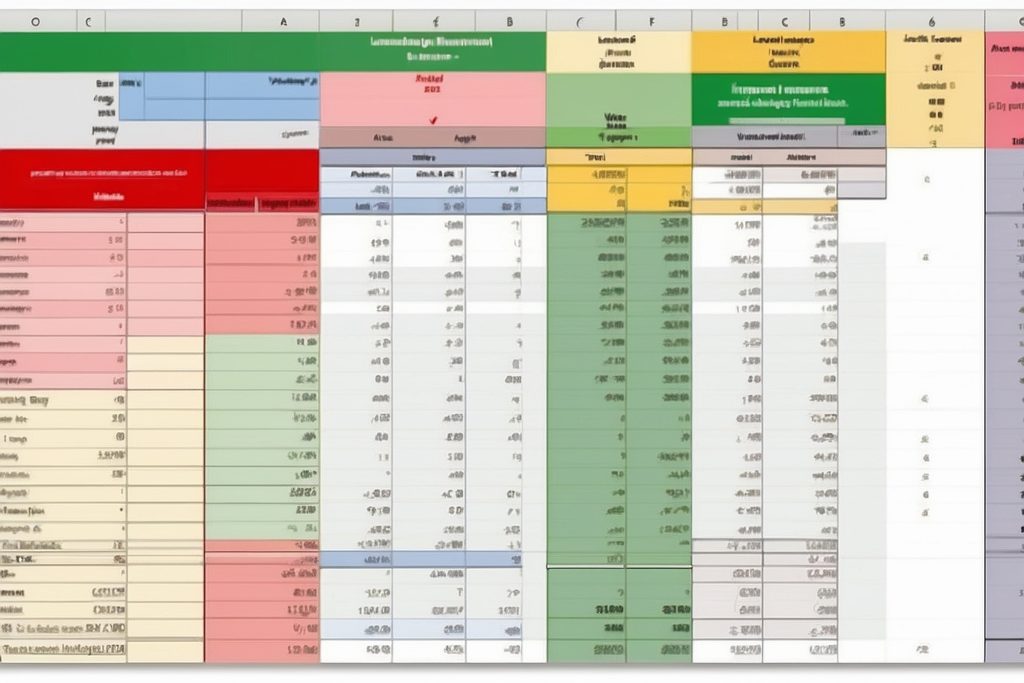In the world of real estate investment, success often hinges on a key financial metric: Net Operating Income, commonly referred to as NOI. This crucial figure not only reflects the financial health of a property but also serves as a vital tool for investors to evaluate and enhance the value of their real estate assets. Understanding NOI is essential for making informed decisions, whether you’re a seasoned investor or someone that is just starting out their real estate investment journey.
NOI stands at the heart of real estate profitability. It is the engine that drives investment strategies and guides crucial decisions. By measuring the income a property generates after accounting for all necessary operating expenses, NOI provides a clear picture of a property’s earning potential. This number is a linchpin in determining the property’s value, informing decisions about purchasing, selling, or refinancing, and it is a cornerstone in the pursuit of maximizing real estate wealth.

In this comprehensive guide, we delve deep into the concept of Net Operating Income. We start by breaking down its components, providing a step-by-step approach to calculating NOI accurately. We then explore various strategies to enhance NOI, tapping into the potential to increase income and minimize expenses effectively. Real-life success stories will illuminate these strategies, offering inspiration and practical insights. Finally, we’ll conclude by emphasizing the significance of NOI in crafting a successful long-term investment strategy, ensuring that you, as an investor, are equipped with the knowledge to maximize your real estate wealth.
With this guide, you’re not just reading about concepts; you’re unlocking a pathway to real estate success. So, let’s embark on this journey to understand, calculate, and boost your Net Operating Income.
Introduction to Net Operating Income (NOI) in Real Estate Investment
Understanding Net Operating Income (NOI) is fundamental for anyone involved in real estate investment. NOI is a key metric used to evaluate the profitability and financial health of a property. It is the gross income a property generates minus the necessary operating expenses, excluding debt service and capital expenditures. This figure helps investors understand the actual income produced by the property, offering insights into its viability and potential return on investment.
What is NOI?
Net Operating Income is a straightforward yet powerful concept. It’s calculated by subtracting all reasonable and necessary operating expenses from the gross operating income. Operating income includes all revenue from the property, such as rents, fees from vending machines, and parking charges. Operating expenses, on the other hand, include costs like property management fees, maintenance, utilities, property taxes, and insurance. Significantly, NOI does not account for mortgage payments, depreciation, and amortization.
Importance of NOI in Real Estate Investment
NOI serves multiple purposes in real estate investment. Firstly, it is a key factor in determining the property’s value. Investors often use NOI in conjunction with the capitalization rate (cap rate) to estimate the property’s value. Secondly, NOI is crucial for loan underwriting. Lenders evaluate NOI to understand a property’s ability to generate enough income to cover debt obligations. Lastly, NOI is an essential benchmark for comparing properties, irrespective of their size or type.

Calculating NOI
Calculating NOI involves two major components: Gross Operating Income and Operating Expenses.
- Gross Operating Income: This is the total income from the property, including rent, service charges, and any other income-generating activities associated with the property.
- Operating Expenses: These are the costs incurred in maintaining and running the property. They include repairs, management fees, property taxes, insurance, and utilities. It’s important to note that capital expenditures, like renovations or major repairs that increase the value of the property, are not included in operating expenses.
The formula for calculating NOI is:
NOI=Gross Operating Income−Operating ExpensesNOI=Gross Operating Income−Operating Expenses
Maximizing NOI
The goal of any real estate investor is to maximize NOI. This can be achieved by increasing gross income, reducing operating expenses, or a combination of both. Rent increases, improved occupancy rates, and adding income-generating features to the property (like laundry facilities or parking) are ways to boost income. On the expense side, efficient property management, negotiating better service contracts, and energy-saving improvements can effectively reduce costs.
NOI is a critical metric in real estate investment, offering a clear picture of a property’s operating performance. Understanding and maximizing NOI can lead to more informed investment decisions and enhanced property value. In the next sections, we will explore deeper into strategies for improving NOI and real-life examples of successful NOI enhancement.
Step-by-Step Guide to Calculating NOI
Calculating Net Operating Income (NOI) is a crucial skill for any real estate investor. It provides a clear understanding of a property’s financial performance. Here, we provide a step-by-step guide to help you accurately calculate NOI.
Understanding Gross Operating Income
- Rent Income: This is the primary source of income for most properties. It includes the monthly rental payments from tenants.
- Other Income: This encompasses additional income sources like parking fees, laundry facilities, and vending machines.
Deducting Operating Expenses
- Property Management Fees: If you employ a property management company, their fees are a part of operating expenses.
- Maintenance and Repairs: Regular maintenance costs and repairs are crucial for keeping the property in good condition and retaining its value.
- Utilities: This includes costs like water, electricity, and gas, if they are not directly paid by the tenants.
- Property Taxes and Insurance: These are mandatory expenses that vary depending on the property’s location and value.
The Calculation Process

- Add up All Income Sources: Total all the income generated from the property, including rent and other sources.
- Sum Up the Operating Expenses: List and total all the necessary expenses incurred in running and maintaining the property.
- Subtract Expenses from Income: The formula is simple: NOI=Total Income−Total Operating ExpensesNOI=Total Income−Total Operating Expenses
Tips for Accurate Calculation
- Regular Updates: Income and expenses can change, so regularly updating your calculations is important.
- Detailed Records: Keep detailed records of all income and expenses for accuracy.
- Professional Assistance: If you find the process challenging, consider seeking help from a real estate accountant or financial advisor.
Why Accurate NOI Matters
An accurate NOI calculation is vital for various reasons:
- Investment Analysis: It helps in assessing the property’s profitability and potential return on investment.
- Property Valuation: NOI is critical in determining the value of a property.
- Loan Applications: Lenders often look at NOI to evaluate the feasibility of loan applications.
Understanding and accurately calculating NOI is a fundamental aspect of successful real estate investment. It not only aids in evaluating a property’s current performance but also in planning for its future profitability.

Strategies to Improve Net Operating Income (NOI) in Real Estate Investment
Improving Net Operating Income (NOI) is a key goal for real estate investors. A higher NOI not only increases the property’s value but also enhances its appeal to potential buyers or financiers. Here are some effective strategies to improve NOI.
1. Enhancing Rental Income
- Market Rate Adjustments: Regularly review and adjust rents to align with current market rates.
- Lease Negotiations: Strategically negotiate lease terms to maximize income.
- Adding Value: Introduce amenities like laundry services, parking, or storage, which tenants are willing to pay extra for.
2. Optimizing Occupancy Rates
- Effective Marketing: Use online platforms and traditional methods to attract a larger pool of potential tenants.
- Tenant Retention: Implement policies that encourage long-term tenancy, such as prompt maintenance and tenant appreciation events.
3. Reducing Operating Expenses
- Efficient Property Management: Streamline management processes to reduce administrative costs.
- Energy Efficiency: Invest in energy-efficient appliances and lighting to lower utility costs.
- Preventive Maintenance: Regular maintenance can prevent more costly repairs in the future.
4. Renovation and Upgrades
- Value-Adding Renovations: Focus on renovations that increase the property’s appeal and functionality, such as updating kitchens or bathrooms.
- Curb Appeal Enhancements: Improving the property’s exterior appearance can attract higher-quality tenants.
5. Alternative Revenue Streams
- Service Fees: Implement fees for additional services like party room rentals or additional parking spaces.
- Advertising Space: Utilize common areas for advertising, if feasible.
Improving NOI is a dynamic process that requires continuous evaluation and adaptation. By implementing these strategies, real estate investors can effectively increase their property’s NOI, enhancing its overall value and profitability.

Real-Life Success Stories: Enhancing NOI in Real Estate
Exploring real-life success stories provides valuable insights into practical ways of enhancing Net Operating Income (NOI). These examples from Ontario’s real estate market demonstrate effective strategies in action.
1. Modernization of an Aging Property
- Story Overview: A Toronto-based investor purchased an older apartment complex with below-market rents.
- Strategy: They implemented significant upgrades, modernizing interiors and improving energy efficiency.
- Outcome: The renovations justified rent increases, significantly boosting NOI while still complying with Ontario’s rent control policies.
2. Focused on Community Building
- Story Overview: A property in Ottawa struggled with high tenant turnover.
- Strategy: The owner invested in community-building activities and upgraded common areas to foster a sense of belonging.
- Outcome: Improved tenant retention led to reduced vacancy rates and a steady increase in NOI.
3. Strategic Repositioning
- Story Overview: A mid-sized commercial property in Hamilton was underperforming.
- Strategy: The investor repositioned the property, targeting a different tenant mix and enhancing the exterior appeal.
- Outcome: This shift attracted higher-paying tenants, resulting in a substantial rise in NOI.
4. Operational Efficiency Improvements
- Story Overview: A multi-family property in Mississauga faced escalating operating costs.
- Strategy: The management introduced cost-saving measures, including energy-efficient upgrades and streamlined maintenance processes.
- Outcome: Reduced operating expenses led to an improved NOI without increasing rents significantly.
5. Adding Value-Added Services
- Story Overview: A residential complex in Kingston sought additional revenue streams.
- Strategy: The owners introduced value-added services like on-site laundry and storage facilities.
- Outcome: These services provided additional income, enhancing NOI while offering convenience to tenants.
These real-life examples from Ontario illustrate that improving NOI often involves a combination of creative strategies, from property upgrades to operational efficiencies and community engagement. Each story highlights the importance of adapting to the property’s specific context and legal framework to maximize NOI.
Leveraging NOI for Long-Term Investment Success
As we have explored throughout this guide, Net Operating Income (NOI) is more than just a financial metric; it’s a compass guiding real estate investors towards success. Understanding and effectively managing NOI can significantly impact the profitability and value of real estate investments.
Key Takeaways
- NOI’s Central Role: NOI is a critical indicator of a property’s financial health and a key factor in investment decisions, property valuation, and financing.
- Calculation Accuracy: Accurately calculating NOI is vital. It requires a comprehensive understanding of both income and operating expenses.
- Improvement Strategies: Strategies to improve NOI include optimizing rental income, enhancing property features, reducing operating costs, and creating community-focused environments.
- Real-Life Examples: The success stories from Ontario’s real estate market demonstrate the impact of strategic improvements and efficient management on NOI.
The Path Forward

For real estate investors, mastering NOI is a continuous journey. The real estate market is dynamic, and strategies that work today may need adjustment tomorrow. Staying informed, adaptable, and responsive to market trends and legal frameworks, especially in regions like Ontario, is crucial.
Final Thoughts
NOI isn’t just a figure on a balance sheet; it’s a reflection of your strategic decisions and operational efficiencies. It’s the result of how well you understand your market and respond to your tenants’ needs. By focusing on maximizing NOI, you’re not just improving numbers; you’re building a sustainable, profitable future in real estate investment.
